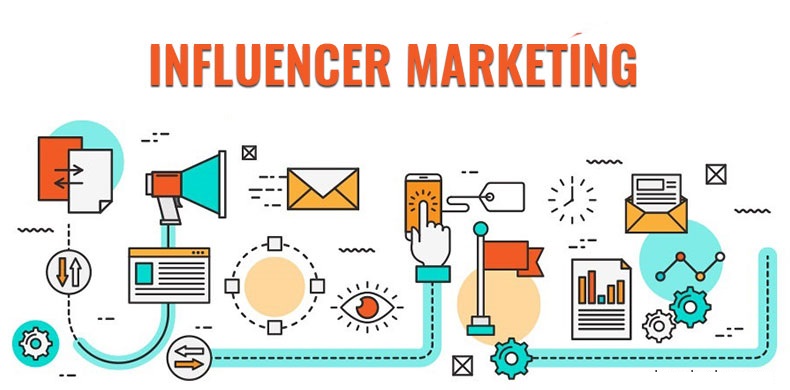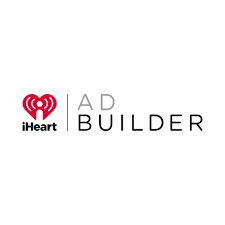
Common forms of roadside advertising include a roadside sign. It acts as a visual distraction for drivers and can affect their driving habits. They can be divided into two types: static or changeable. It is not clear what these signs do to driving behaviour.
Despite their widespread popularity, evidence regarding the direct impact of advertisements on road safety is sparse. A number of studies have examined key human factors related to roadside advertisements.
There are many factors that could influence the risk of roadside advertising. These include the physical attributes of signs, the speed atwhich they change, how much information is displayed, and whether there is a person on the sign. These factors all impact the level of attention that drivers pay to these signs. This is affected by the driver's behavioural characteristics and their physiological and psychological resources.

Drivers who are inexperienced or young are more likely to spend their attention on interaction with roadside ads than drivers who are older and more experienced. Their ability to discriminate between relevant and irrelevant information is also lower. These individuals are therefore more vulnerable to distraction.
One way to analyze the effects of roadside advertisements on driving behavior is using the Task-Capability Interface Model (TCI). This model combines vehicle and environment to explain the relationship between the two. According to the TCI model the degree of changeability and attention paid by drivers is directly related to the quality of roadside advertisements signs. The number of signs displayed and the order of the images displayed are all transient factors.
A roadside sign was found to cause performance declines in drivers. Studies found that these decrements were greatest in young drivers. The sign's presence with a human seemed to increase distraction.
Researchers have also studied the impact of different roadside advertising technologies on driver behavior. In Israel, one study compared billboard removal to restoration to determine if it had an impact on the driving habits of drivers. Another study examined the effect of digital ads on how drivers drive.

Roadside advertising recognizes the importance road safety but is not responsible for making sure their products don't cause a crash. Therefore, research must be done on a wide range of road users. Moreover, these research studies must consider pedestrians as well.
It is important to examine the effects of roadside advertisements on driving. However, it is equally important that we consider all human factors that could influence driving. But it isn't always possible.
The complex relationship between roadside advertisements and drivers' behavior is not easy to understand. It is possible to view roadside advertising as environmental clutter. However, it can be difficult for drivers to evaluate its impact.
FAQ
What is affiliate marketing?
Affiliate marketing can be described as an online business model. You earn commissions by referring customers who purchase products and/or services on other websites. The product owner pays you for each person who buys from you.
Affiliate marketing is built on referrals. To get people to buy from your affiliate marketing, you don't have any special requirements. Simply refer people to the website.
You don't have to sell anything. It's as simple to sell as to buy.
It takes just minutes to set up an account as an affiliate.
Referring more people will result in more commission.
There are 2 types of affiliates.
-
Affiliates who are the owners of their own websites
-
Affiliates who work for companies that offer products and services.
How much does it cost for social media advertising?
You should be aware that social media advertising costs money. Based on the time spent on each platform, you will be charged monthly.
Facebook - $0.10 Per 1,000 Impressions
Twitter - $0.20/1000 impressions (if applicable)
If you send invitations, Linkedin: $0.30 per 1,000 impressions
Instagram - $0.50 Per 1,000 Impressions
Snapchat - $0.60 for 1,000 impressions ($0.40 Per User)
YouTube – $0.25 per 1000 views
Tumblr - $0.15 per 1,000 impressions for text posts.
Pinterest - $0.05 per 1,000 impressions per month
Google + $0.15-$0.20 Per 1 Million Impressions
Tumblr $0.15- $0.20 for 100,000 impressions
Vimeo - $0.20-$0.25 per 10,000 impressions
Soundcloud - $0.20 - $0.0.25 for 1,000,000 plays
StumbleUpon - $0.20 -$0.25 per 1 billion pageviews
Digg - $0.20- $0.25 for 1000 diggs
Reddit - $0.20 - $0.0.25 per 1000 Comments
Wordpress $0.20-$0.25 per 500 Comments
Flickr - $0.20 -- $0.25 per 5,000 photo uploads
What should you know about internet marketing?
Internet advertising is an important part of any business strategy today. It allows businesses to reach potential clients at a low price. There are many types of internet advertising. Some advertising is free and others are paid.
You can also advertise online using banner ads, pop up ads, search engine optimization, pay-per-click advertisements (PPC), social media marketing (e-mail marketing), and mobile marketing. Each method has its advantages and disadvantages.
How do I choose my target market?
Start with yourself and those close to you. Do you not know where to start? Ask yourself "Whom do I want to reach?"
These are some questions to ask yourself: Who is the most influential person in my industry? What problems do they deal with daily? Who are my top-ranking people? Where do they hang out online?
Return to the beginning. Why did you start? How did you solve the problem?
These answers will help you identify who your ideal clients are. Learn more about them and why they choose to do business with you.
You can also look at your competitors' websites and social media pages to find clues about whom they cater to.
Once you have identified your target customers you will need to choose the channel to reach them. For example, if your company provides services to real estate agents, you might create an informational website targeting home buyers.
A blog that targets small-business owners could be a possibility if you are a software provider.
If you sell clothing, you could create a Facebook page for teens. A Twitter account could be set up by restaurant owners to allow parents to search for places that are kid-friendly.
This is the point: There are many ways to communicate your message.
What is branding?
Branding is how you communicate who you are and what you stand for. It is how you make people recall you when they hear you name.
Branding involves creating an identity that makes your company stand out. A brand is more than just a logo. It includes everything from your physical appearance and the voice of employees.
Customers feel more confident buying from your company if they have a solid brand. They know what they're getting. And it gives them confidence in choosing your products over those of competitors.
Apple is a great example of a brand-named company. Its brand is known worldwide for its sleek design, high-quality products, and customer support.
Apple's name is synonymous with technology. Apple is synonymous with technology.
When you consider starting a business, it's important to develop a brand. This will give your brand a personality.
What is an advertisement campaign?
Advertising campaign refers to a series of advertisements intended to promote a product. It may also refer to the entire production of such ads.
The Latin word "to sell" gave rise to the term "ad". Marcus Terentius Varro (116–27 BC) was the first person to use it. It meant "to sell".
Large companies or agencies usually do advertising campaigns. These campaigns may include many media types such as print, television, radio and the internet.
Advertising campaigns last several months and are usually focused on specific goals. For instance, some campaigns aim to generate awareness while others focus on increasing sales.
What do you need to know about print advertising?
Print advertising is an effective medium for communicating with consumers. It is used by many companies for promoting products and services. The key objective is to capture the attention of the consumer.
Print ads are typically short (1 page) and usually include text, photos, logos, or other graphics. They may also include sound, animation, video, and hyperlinks.
Here are the main types and classifications of print advertising:
1. Brochures are large-format printed materials that are designed to draw people into shops. Brochures often feature eye-catching designs and colorful photos.
2. Catalogues – These are smaller versions to brochures. These are often sent to customers who have asked for information on particular items.
3. Flyers - These small pieces of paper are distributed at events like fairs and concerts. If they are given out at retail outlets, they can be obtained for free, but you must pay for them.
4. Posters - These are larger versions of flyers. They are placed on walls, fences, buildings and other surfaces. They are typically created using computer software programs that aim to attract the attention of passersby.
5. Direct mail - These are letters or postcards that are sent directly to potential customers. These are sent periodically by companies to remind current customers about their business.
6. Newspaper Ads - These advertisements are found in newspapers and magazines. These are typically quite long and often contain text as well images.
Statistics
- It's 100% reliant on your website traffic. (quicksprout.com)
- Advertising spending as a share of GDP was about 2.9 percent. (en.wikipedia.org)
- In 1919 it was 2.5 percent of gross domestic product (GDP) in the US, and it averaged 2.2 percent of GDP between then and at least 2007, though it may have declined dramatically since the Great Recession. (en.wikipedia.org)
- Worldwide spending on advertising in 2015 amounted to an estimated US$529.43 billion. (en.wikipedia.org)
External Links
How To
How to Make Sponsored Ads On Facebook
Facebook is now one of the most used social networking sites. It has been estimated that there are 1.79 billion active monthly users worldwide. This number continues to grow every day.
Facebook is completely free. However, you will need to pay to reach your target audience. You can use paid advertising options such as banners, promoted posts, etc.
Log in to your existing application if you have one. Otherwise, click "Create New App." These are the steps to follow:
-
Click "Add Platform," under the Apps Section.
-
Click Continue, then select "Advertising".
-
Fill out the form and submit it.
-
After approval, you'll receive a Client ID (and Secret key). Copy them.
-
Then, copy the keys into the appropriate areas.
-
Enter the name of your campaign and select the currency.
-
Click "Begin Campaign".
-
Follow the steps until the banner appears. Copy the URL, then go back to your Facebook profile.
-
Copy the code and paste it into the box provided to you by Facebook.
-
Click "Save Changes".
-
Your ad must now be live
-
You can repeat steps 10 through 12 for every additional banner you create.
-
When finished, click "Continue" and proceed with the rest of the process.
-
Create your final ad group.
-
After you are done, click "View All Ads" and see all your campaigns.
-
Click "Remove ads" next to each ad to remove it.
-
If your campaign is not producing results, make sure you have followed the instructions.
-
Make sure to check the dates of your campaign.
-
It is important to budget properly.
-
You can save your changes.
-
Before you click "Submit", make sure to review the settings.
-
Wait for your ads to appear on your timeline.
-
Congratulations for a job done well!
-
Now let's look at some tips for improving your results.